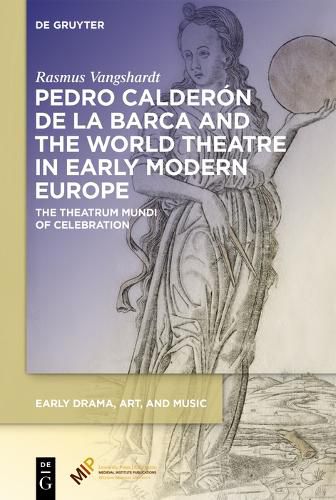Readings Newsletter
Become a Readings Member to make your shopping experience even easier.
Sign in or sign up for free!
You’re not far away from qualifying for FREE standard shipping within Australia
You’ve qualified for FREE standard shipping within Australia
The cart is loading…






This title is printed to order. This book may have been self-published. If so, we cannot guarantee the quality of the content. In the main most books will have gone through the editing process however some may not. We therefore suggest that you be aware of this before ordering this book. If in doubt check either the author or publisher’s details as we are unable to accept any returns unless they are faulty. Please contact us if you have any questions.
Rasmus Vangshardt offers an original interpretation of one of the most famous images of literary history, the theatrum mundi. By applying methods of comparative literature, hispanic studies, and theology, he reconsiders the world theatre's historical peak in early modern Europe in general and the Spanish Golden Age in particular.
The author presents a new close reading of Pedro Calderon's El gran teatro del mundo (c. 1633-36) and outlines the historical and systematic framework for a theatrum mundi of celebration. This concept entails using art to justify human existence in the face of changing conceptions of the cosmos: an early modern aesthetic theodicy and a justification of the world in that liminal space between drama and ritual.
By discussing historiographical theories of early modern Europe, especially those of Hans Blumenberg and Bruno Latour, and through conversations with Shakespearean drama and Spanish Golden Age classics, Vangshardt also argues that the theatrum mundi of celebration questions traditional assumptions of great divides between the Middle Ages and Early Modernity and challenges theories of a European-wide early modern sense of crisis.
$9.00 standard shipping within Australia
FREE standard shipping within Australia for orders over $100.00
Express & International shipping calculated at checkout
This title is printed to order. This book may have been self-published. If so, we cannot guarantee the quality of the content. In the main most books will have gone through the editing process however some may not. We therefore suggest that you be aware of this before ordering this book. If in doubt check either the author or publisher’s details as we are unable to accept any returns unless they are faulty. Please contact us if you have any questions.
Rasmus Vangshardt offers an original interpretation of one of the most famous images of literary history, the theatrum mundi. By applying methods of comparative literature, hispanic studies, and theology, he reconsiders the world theatre's historical peak in early modern Europe in general and the Spanish Golden Age in particular.
The author presents a new close reading of Pedro Calderon's El gran teatro del mundo (c. 1633-36) and outlines the historical and systematic framework for a theatrum mundi of celebration. This concept entails using art to justify human existence in the face of changing conceptions of the cosmos: an early modern aesthetic theodicy and a justification of the world in that liminal space between drama and ritual.
By discussing historiographical theories of early modern Europe, especially those of Hans Blumenberg and Bruno Latour, and through conversations with Shakespearean drama and Spanish Golden Age classics, Vangshardt also argues that the theatrum mundi of celebration questions traditional assumptions of great divides between the Middle Ages and Early Modernity and challenges theories of a European-wide early modern sense of crisis.